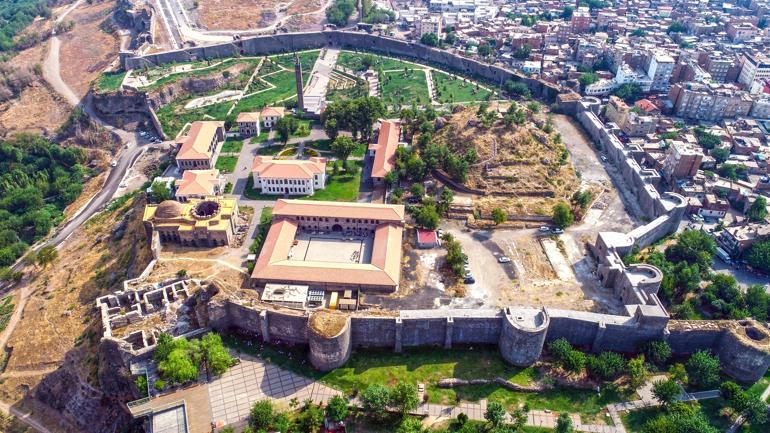
Works on the 5,000 year-old Amida Mound in the southeastern province of Diyarbakır’s historic Sur district, called “the heart of the city,” have unearthed a water channel and a tunnel, which reaches the channel. Water has been flowing through the channel for centuries.
Amida Mound, which is home to many civilizations including Hurrian and Mitanni, Urartian, Persian, Roman, Umayyad, Abbasid, Mervan, Seljuk and Artuqid, has been undergoing archaeological excavations under the leadership of Dicle University academic Professor İrfan Yıldız.
Speaking to state-run Anadolu Agency, Yıldız said the first archaeological excavations in the mound unearthed the foundations of a palace from the era of Artuqid ruler Nasreddin Mahmud al-Malik es-Salih (1200-1222) and mosaic decorations with color stones and glass cubes.

Yıldız said since the region was in the military area and the property belonged to the municipality, no excavations have been carried out since that date, and that they started excavations two months ago upon the decision of the Culture and Tourism Ministry.
A water channel passing through the mound and a tunnel reaching the canal were found on the northwest side of İçkale entrance during the studies, he said. The tunnel was not recognized because it was closed at the front, he added.
The professor noted that written sources and travelers mentioned the existence of a large source of water in İçkale, adding that this water was transferred to the Artuqid Palace through a system that raises the water upward.
Water was transferred from there to the Süleyman Mosque and a few neighborhoods around in İçkale, he said.
“The length of the tunnel is about 30 meters but we do not know how long the water channel is. That feature of the channel will be revealed during detailed studies. As the current excavation mostly involved the Artuqid Palace, we only carried out a survey in the canal and tunnel,” said Yıldız.
The palace was used as a science and cultural center in the Artuqid period, and the famous Islamic scholar Ismail al-Jazari performed pioneering works there, which have led to the current automation systems, cybernetics and robotic science, he said.
İçkale, where the mound is located, was one of the first places where Islam began in Anatolia and 27 companions fell martyrs during the city’s conquest, said the professor.
Yıldız said the wall surrounding İçkale had been built with the order of Kanuni Sultan Suleiman, adding that he resided in Diyarbakır for a while on his return from the Iraq campaign.
The walls around the Artuqid Palace were built in the Roman era, he said.
“When Sultan Suleiman came to Diyarbakır in 1527, he ordered the construction of the current walls surrounding İçkale. This shows how much importance he gave to Diyarbakır,” said the professor.